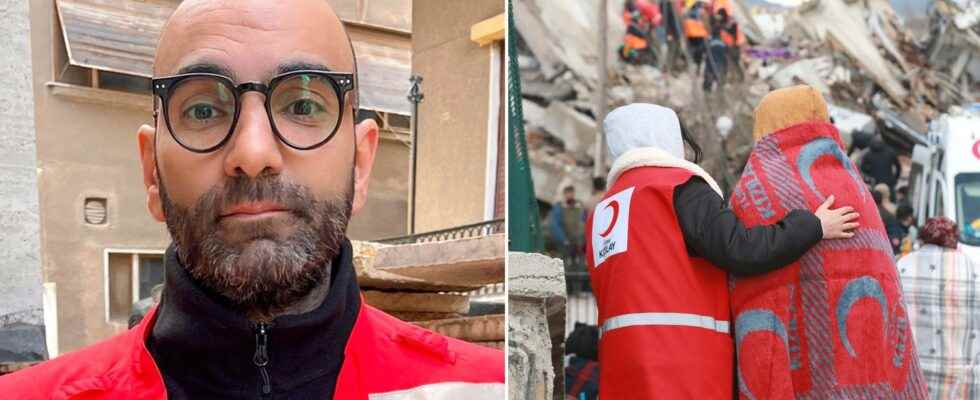Published: Less than 20 min ago
Gabriel Karlsson is on site in Syria for the Red Cross to help victims after the earthquake on February 6.
He describes the situation as one long drawn-out nightmare.
– What was destroyed here in a few seconds will take years to build up, he says.
About 50,000 people are estimated to have died so far in the February 6 earthquake that struck southeastern Turkey and northern Syria.
According to the World Health Organization (WHO), around 26 million people are estimated to have been affected by the disaster, and the aid needs are therefore still described as enormous.
Cold, lack of clean water and diseases risk hitting people hard, especially those who have been forced to leave their homes in both Turkey and Syria.
Swedish Gabriel Karlsson, who works for the Red Cross, has been on the ground in Damascus in Syria for seven months and says that people are in need of care, shelter, food and clean water.
– It’s just one protracted nightmare. The situation here is extremely difficult and affects a population that has already lived through an armed conflict that destroyed the country’s economy and infrastructure.
He works daily in affected cities such as Latakia, Homs, Hama and Aleppo – and on Sunday at 6am they go out again.
The needs are growing
The need for help, which was already enormous before February 6, is growing now, he says, and says that it is not only about basic necessities such as mattresses, blankets and food, but also about psychosocial support for people who have experienced multiple traumas and crises over many years.
– People are tired and worn out, many have already been forced to leave their homes and move several times because of the conflict. They also now understand that what was destroyed here in seconds will take years to rebuild, but with what? with which infrastructure and with which economy? It is a difficult situation.
He describes that the knowledge of the population that they need help from the outside world creates further stress, anxiety and trauma.
– We try to assure them that the world will not abandon them. We have to invest in these invisible scars to also protect the children who won’t have to see their parents stressed and powerless, says Gabriel Karlsson.
Strongest earthquake in 100 years
19 days have passed since the earthquake and so far the Red Cross together with its sister organization the Syrian Arab Crescent have managed to help 2.5 million people, over a million food packages have been delivered and 350 cars and ambulances work around the clock to deliver support to the homeless.
The quake measured a magnitude of 7.8 and was felt in Iran, Iraq, Jordan, Lebanon, Egypt, Cyprus and Greece. Later that day there was another earthquake measuring 7.5.
These are the strongest earthquakes in the area in about 100 years, according to the Red Cross.
Facts
Swedish rescue efforts were sent to Turkey
Sweden sent a team consisting of 45 people from the Armed Forces and MSB to help in the search and rescue work in the earthquake-affected area in Turkey.
MSB has also sent tents, beds, mattresses, food and electricity to affected areas.
Another 500 emergency homes with room for five people in each will be sent from Sweden to Turkey.
Read more
